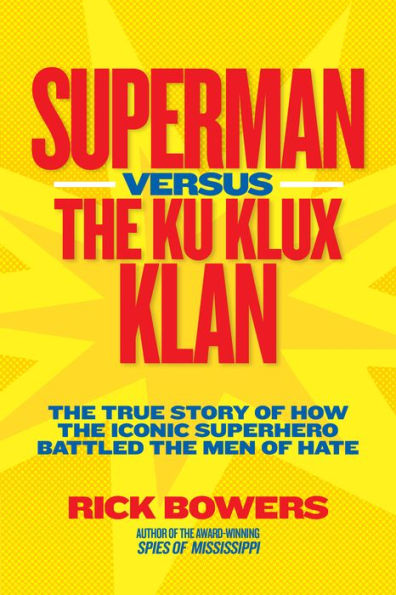This book tells a group of intertwining stories that culminate in the historic 1947 collision of the Superman Radio Show and the Ku Klux Klan. It is the story of the two Cleveland teenagers who invented Superman as a defender of the little guy and the New York wheeler-dealers who made him a major media force. It is the story Ku Klux Klan's development from a club to a huge money-making machine powered by the powers of fear and hate and of the folklorist who--along with many other activists-- took on the Klan by wielding the power of words. Above all, it tells the story of Superman himself--a modern mythical hero and an embodiment of the cultural reality of his times--from the Great Depression to the present.
National Geographic supports K-12 educators with ELA Common Core Resources.
Visit www.natgeoed.org/commoncore for more information.
From the Hardcover edition.
1103291889
National Geographic supports K-12 educators with ELA Common Core Resources.
Visit www.natgeoed.org/commoncore for more information.
From the Hardcover edition.
Superman versus the Ku Klux Klan: The True Story of How the Iconic Superhero Battled the Men of Hate
This book tells a group of intertwining stories that culminate in the historic 1947 collision of the Superman Radio Show and the Ku Klux Klan. It is the story of the two Cleveland teenagers who invented Superman as a defender of the little guy and the New York wheeler-dealers who made him a major media force. It is the story Ku Klux Klan's development from a club to a huge money-making machine powered by the powers of fear and hate and of the folklorist who--along with many other activists-- took on the Klan by wielding the power of words. Above all, it tells the story of Superman himself--a modern mythical hero and an embodiment of the cultural reality of his times--from the Great Depression to the present.
National Geographic supports K-12 educators with ELA Common Core Resources.
Visit www.natgeoed.org/commoncore for more information.
From the Hardcover edition.
National Geographic supports K-12 educators with ELA Common Core Resources.
Visit www.natgeoed.org/commoncore for more information.
From the Hardcover edition.
50.0
In Stock
5
1

Superman versus the Ku Klux Klan: The True Story of How the Iconic Superhero Battled the Men of Hate
160
Superman versus the Ku Klux Klan: The True Story of How the Iconic Superhero Battled the Men of Hate
160Related collections and offers
50.0
In Stock

Product Details
| ISBN-13: | 9781426309175 |
|---|---|
| Publisher: | National Geographic Society |
| Publication date: | 01/10/2012 |
| Sold by: | Penguin Random House Publisher Services |
| Format: | eBook |
| Pages: | 160 |
| File size: | 7 MB |
| Age Range: | 10 - 14 Years |
About the Author
From the B&N Reads Blog
